Best Practices and Tips for Unito's Azure DevOps Integration
Here are a few guides to making the most of this integration.
Filtering Azure DevOps epics, issues, and tasks with Unito
Section titled “Filtering Azure DevOps epics, issues, and tasks with Unito”The default settings in Unito will sync all Azure DevOps work item types, but you can choose to specify between issues, epics and/or tasks in the rules of your flow.
- Click Add a new rule, then select Work item type.
- Choose an is/is not condition and then the work item types you want to include.
- Selecting multiple work item types will sync any of the options you choose.
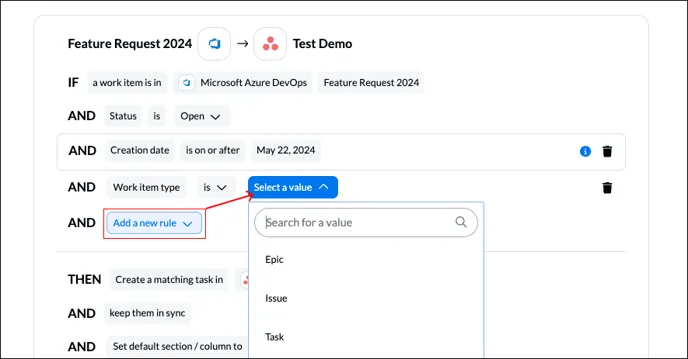
How to track ADO work items in other tools
Section titled “How to track ADO work items in other tools”If the other tool you’re syncing to doesn’t have an equivalent to a ticket number or unique identifier, you can simply create one as a custom field and add it to your field mappings:
How to set multiple ADO work item types in your flow
Section titled “How to set multiple ADO work item types in your flow”When you sync items from other tools into Azure DevOps, you can have them appear as any work item type in your project. There are two stages to this.
Configuring ADO work item types in Unito
Section titled “Configuring ADO work item types in Unito”Unito allows you to control which Azure DevOps (ADO) work item types are used when syncing from other tools. Here’s how:
Set the Default Work Item Type (Optional)
Section titled “Set the Default Work Item Type (Optional)”In the “Rules” section of your flow, you can set a default work item type. This type will be used for all synced items unless you specify otherwise in the next step.
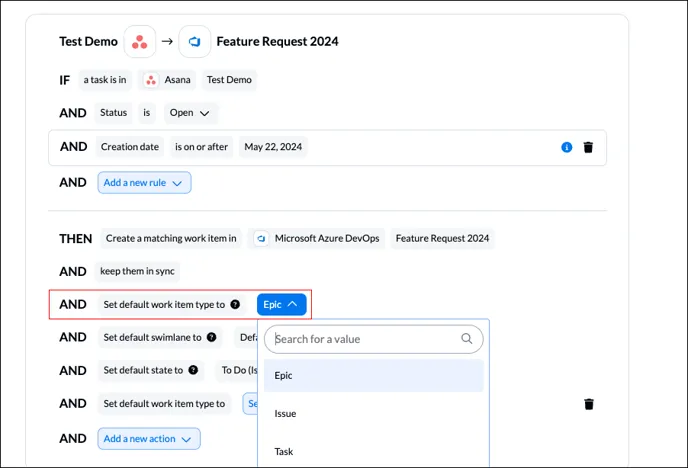
Map Additional Work Item Types
Section titled “Map Additional Work Item Types”In the “Field Mappings” section, map the “Work item type” field from Azure DevOps to the corresponding field in your other tool (e.g., the equivalent to “task,” “bug,” “epic,” etc.
- Click the gear icon next to the mapping, then click “Add more work item types and…” to create specific mappings for each desired work item type.
- Now, set values for each item type you want to see in both tools.
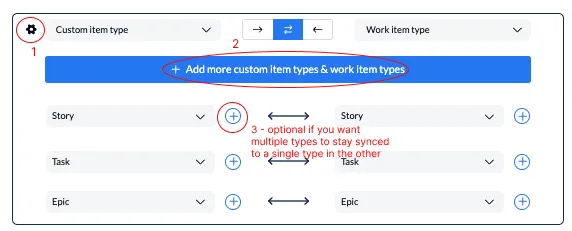
In this example, a story, task or epic in our Wrike custom item type will appear as a story, task or epic in Azure DevOps. Any other item type not listed here will appear in ADO as our default work item type established in the flow’s rules section.
Automatically adding ADO work items to the current sprint
Section titled “Automatically adding ADO work items to the current sprint”By default, Unito won’t add new ADO work items to your current sprint. But through Advanced Options, you can customize your flow to do exactly that.
Access Advanced Options for an existing flow by clicking the upright ellipses to the right, then Edit.

From there, click Advanced Options.
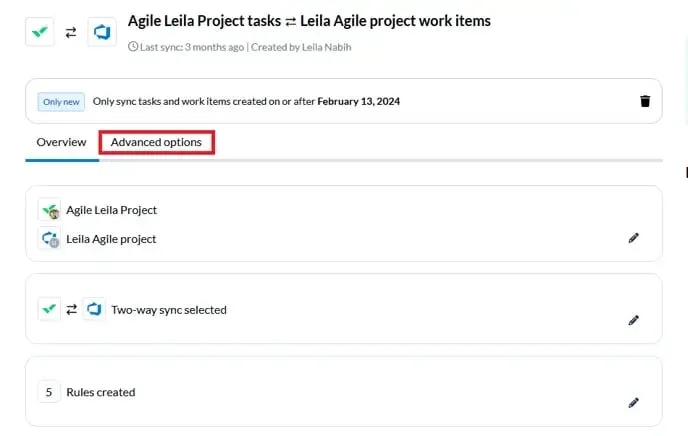
Then find the Advanced features box.
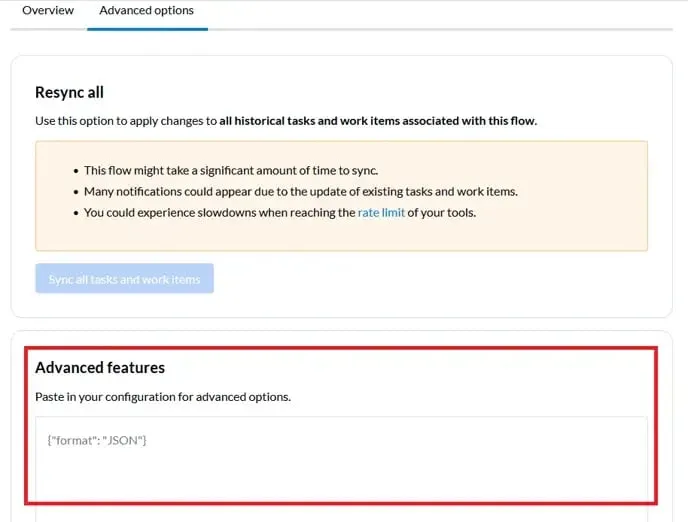
Finally, add the following bit of code to that box:
{
"A": {
"useCurrentIterationPathOnCreate": true
}
}
If ADO is the first tool in your flow (i.e. it’s on the left in the flow screen), then copy this code as is. If ADO is the second tool in your flow (i.e. on the right in the flow screen) replace the A with a B.